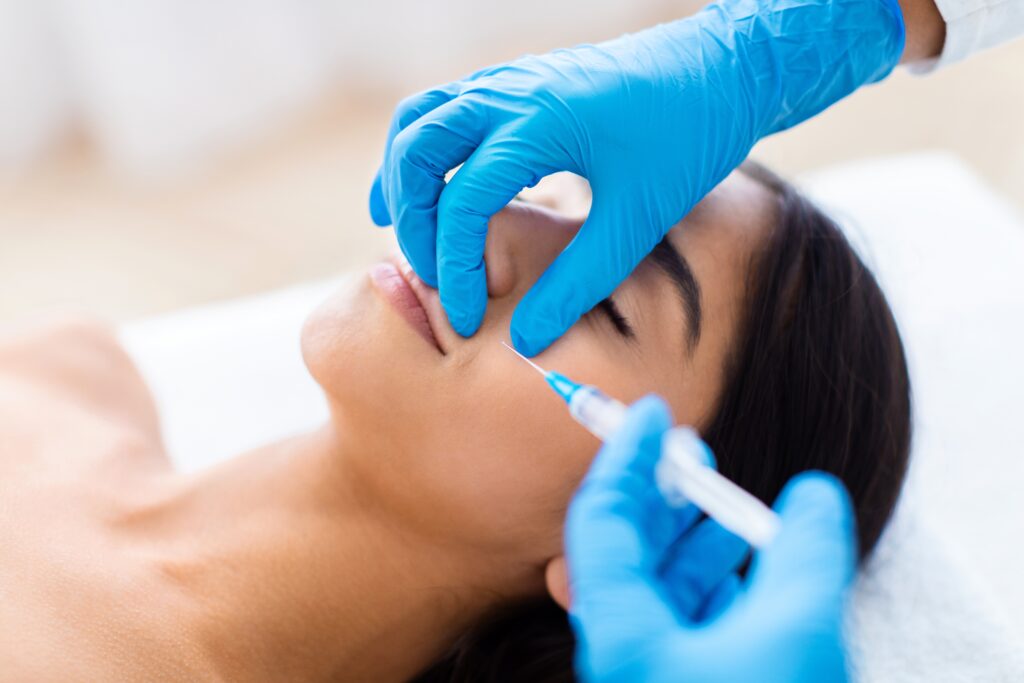Understanding Skin Resurfacing
In the last half of this century, men and women have had more leisure time to spend outdoors than in previous generations. Many hours spent on outside recreation and the prevalence of both summer and winter vacations have all taken their toll on people’s skin. Premature wrinkling is more common now than ever before both men and women seek facial plastics surgery to reverse the effects of sun damaged skin. Surgery may also improve the pitted look of acne scars and remove pre-cancerous skin growths called keratosis.
If you’ve wondered how skin resurfacing with lasers, chemical peeling or dermabrasion could improve the look of your skin, your self-confidence or your health, you need to know laser resurfacing, chemical peeling and dermabrasion are performed and what can expect for these procedures. No pamphlet can answer all of your concerns, but this one can provide answers t many common questions about laser resurfacing, chemical peeling and dermabrasion.
Successful facial plastic surgery is a result of good rapport between patient and surgeon. Trust, based on realistic expectations and exacting medical expertise, develops in the consulting stages before surgery is performed. Your surgeon can answer specific questions about your specific needs.
Is Skin Resurfacing for You?
The most basic requirement for any surgery is good health. Other requirements are more subtle and should be carefully considered in discussions with your surgeon. Expectations of surgery and of the surgeon must be realistic. Skin resurfacing procedures cannot produce perfect skin; rather, the goal is to improve the appearance of the skin as much as possible.
Skin type and color, ethnic background, and age are important factors that should be discussed prior to surgery. Of you have dark skin or problems such as allergies, previous burns, a history of poor scars, or radiation exposure, you may need special a evaluation to determine if you are a candidate for these procedures. If you have had episodes of cold sores and blisters around the mouth, inform your surgeon of this condition.
Before deciding on a skin resurfacing procedure, your facial plastic surgeon may recommend a skin care regimen prior to the procedure to enhance the result as well as expedite your recovery. If you have extensive damage from aging or injury, more than one procedure may be necessary.
Making the Decision for Skin Resurfacing
Whether you seek laser skin resurfacing, a chemical peel or dermabrasion for functional or cosmetic reasons, your choice of a qualified facial plastic surgeon is of paramount importance. The surgeon will examine your skin to assess factors that affect the outcome of the surgery and to determine the proper procedure for your condition. You and your surgeon will explore your attitudes towards surgery, and discuss realistic expectations and the risks. Trust is built through these discussions, and the agreement between surgeon and patient is a prerequisite for a successful outcome to the surgery.
After you and your surgeon decide to proceed with laser resurfacing, chemical peel or dermabrasion, all options for the procedure will be discussed along with the risks. You will also receive information relating to each procedure. Bear in mind that neither chemical peel nor dermabrasion can correct sagging skin or halt the aging process. Furthermore, as some chemical peels lighten skin color, you must make a commitment to use sunblock after surgery. Following a thorough medical history, your surgeon will advise you as to anesthesia options, the surgical facility being used, any additional surgery options, and the costs for the procedure. Your surgeon may also suggest other surgery, either before or after your resurfacing procedure, in order to enhance your overall appearance.
What Are The Different Types of Skin Resurfacing Treatments?
The skin is composed of the epidermis and the dermis. Within the dermis are two layers, both of which are constructed of collagen, long fibers that loosen and stretch with age and sun damage. If the deepest layer, the reticular layer, is damaged scars result, while the upper layer of dermis, the papillary layer, heals from injuries without scarring.
Chemical Peel
On a chemical peel, the surge ion applies one of several chemicals to the skin. Glycolic acid is the mildest. TCA, trichloroacetic acid, can be used in varying strengths for longer;-lasting smoothness. The deepest peel is done with phenol.
Before any peel, the face is first thoroughly cleansed with a solution to remove oil and to prepare the skin for deepest penetration. As the chemical is applied, the epidermis is removed, and the chemical penetrates into the first layer of the dermis.
Dermabrasion
Dermabrasion is a surgical technique whereby some deeper scars and wrinkles can be smoothed. The surgeon uses a local anesthetic and/or a freezing agent to render the skin numb. Then, using a high speed rotating brush, the surgeon removes the top layer of skin to the appropriate level for the best results. The size and depth of scars and the degree of wrinkling determine the length of the surgery.
Laser Surgery
Laser surgery is used to resurface facial skin with wrinkles caused by excess sun exposure, “crow’s feet” and acne scarring. The high energy, amplified light waves of the laser vaporize the top layer of skin instantly, with no bleeding and minimal trauma to the surrounding skin.
What to Expect After A Skin Resurfacing Treatment
Immediately following laser resurfacing, chemical peel or dermabrasion, the surgeon may apply a dressing to your skin. Swelling and “crusting” of the skin are normal, and ointments to keep the skin supple will be applied for seven to ten days following surgery. The redness of skin that persists after the initial healing phase fades with time. The surgeon often recommends a soft diet, avoidance of extremes in temperature and any activity that would cause stress to healing skin. It is imperative that you follow the post-operative instructions of your surgeon to the letter. Should you experience any increase in rd ness or itching in the days after surgery, notify your surgeon immediately.
In one to two weeks after surgery, new skin will emerge that is pinkish finer and free of many wrinkles. But it may take weeks for all the redness to vanish. Follow-up care involves using sunblock in order to protect the skin while new pigment is created. Patients will notice that the skin remains lighter for a long time after surgery, but that condition will usually subside when the skin’s pigment level has been restored.
Facial plastic surgery makes it possible to correct many facial flaws and signs of premature aging that can undermine self-confidence. By changing how you look, cosmetics surgery can help change how you feel about yourself.
Insurance does not generally cover surgery that is done purely for cosmetic reasons. Surgery to correct or improve major deformities or accidental skin injuries may be reimbursable in whole or in part. It is the patient’s responsibility to check with the insurance carrier for information on the degree of coverage.
Recent Posts

Reversing Smoking Damage to Your Skin
Smoking can cause significant skin damage, affecting both overall skin health and its appearance. However, smoking damage can be severe, but there are ways to reverse skin damage caused by…

Balancing Holistic Practices with Cosmetic Treatments
A holistic approach to beauty, including focusing on lifestyle, nutrition, and mental well-being, contributes to skin health as well as general healthiness. Combining holistic practices like these with the non-surgical…

Xeomin vs. Dysport vs. Botox Injections
Xeomin®, Dysport®, and Botox® are all injectable treatments that belong to a class of medications called neuromodulators that use the same main ingredient, botulinum toxin type A. When used for…

A Complete Guide to the Cosmetic Treatment Process: Start to Finish
Non-surgical cosmetic treatments are a great way to revive your look in a safe and effective manner, without the risks associated with surgery. Since 1999, The Rejuva Center at Williams…
